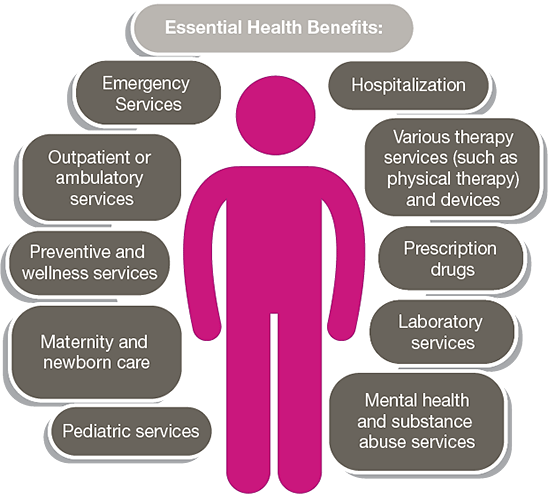Some Known Factual Statements About Medicare Advantage Agent
Some Known Factual Statements About Medicare Advantage Agent
Blog Article
The Definitive Guide for Medicare Advantage Agent
Table of Contents3 Easy Facts About Medicare Advantage Agent DescribedRumored Buzz on Medicare Advantage AgentWhat Does Medicare Advantage Agent Mean?


follows from complies with the perplexing young fairly profile of the uninsured with without insurance better health, health and wellness average, of younger persons. For those without access to office health and wellness insurance policy, poor health is a possible barrier to purchasing nongroup insurance coverage since such protection might be extremely priced, omit preexisting conditions, or be merely not available. Unless or else noted, national quotes of individuals without health insurance and proportions of the populace with different kinds of protection are based on the CPS, the most widely utilized resource of estimates of insurance coverage and uninsurance prices.

A Biased View of Medicare Advantage Agent
Over a three-year duration beginning early in 1993, 72 million people, 29 percent of the U.S. populace, were without protection for at the very least one month. Within a solitary year(1994), 53 million people experienced at the very least a month without protection(Bennefield, 1998a). 6 out of every ten uninsured grownups are themselves utilized. Although working does boost the probability that a person and one's family participants will certainly have insurance policy, it is not a warranty. Even members of family members with 2 full time breadwinner have practically a one-in-ten possibility of being without insurance (9.1 percent without insurance price)(Hoffman and Pohl, 2000 ). The connection between medical insurance and accessibility to care is well established, as recorded later in this chapter. The connection between health and wellness insurance policy and health outcomes is neither straight nor basic, a comprehensive medical and wellness solutions research study literature links wellness insurance coverage
to improved access to care, better far betterTop quality and improved personal and population populace status. As an example, the 2nd record, on personal health end results for uninsured adults, is stood for by the innermost circle of the number, while the third record, on family well-being, encompasses the topics of the 2nd report but stresses a various system of analysis, namely, the family. The sixth record in the series will offer details concerning methods and initiatives embarked on in your area, statewide, or country wide to deal with the lack of insurance and its negative effects. Degrees of analysis for analyzing the impacts of uninsurance. This discussion of medical insurance coverage focuses largely on the U.S. populace under age 65 since essentially all Americans 65 and older have Medicare or various other public protection.
Moreover, it concentrates particularly on those with no health and wellness insurance for any size of time. The troubles encountered by the underinsured remain in some respects similar to those dealt with by the without insurance, although they are typically less extreme. Uninsurance and underinsurance, however, include distinctly different plan concerns, and the methods for addressing them may differ. Throughout this study and the 5 records to comply with, the primary focus gets on persons without medical insurance and hence no support in paying for healthcare beyond what is readily available through charity and safety web establishments. Medical insurance is an effective aspect affecting receipt of treatment since both clients and doctors reply to the out-of-pocket rate of services. Medical insurance, nonetheless, is neither necessary nor adequate to get to medical services. Nevertheless, the independent and straight result of health and wellness
insurance policy protection on access to health and wellness solutions is well developed. Others will certainly get the health care they need also without wellness insurance coverage, by spending for it expense or seeking it from suppliers that supply care free or at highly subsidized rates. For still others, medical insurance alone does not guarantee receipt of care as a result of various other nonfinancial obstacles, such as a lack of wellness care carriers in their community, limited accessibility to transport, illiteracy, or etymological and cultural distinctions. Formal research study concerning without insurance populations in the United States dates to the late 1920s and very early 1930s when the Committee on the Expense of Healthcare produced a collection of reports about funding doctor workplace sees and hospitalizations. This problem came to be prominent as the numbers of clinically indigent climbed up during the Great Clinical depression. Empirical researches consistently sustain the web link between access to care and boosted health and wellness end results(Bindman et al., 1995; Starfield, 1995 ). Having a routine resource of treatment can be thought about a forecaster of accessibility, rather than a direct procedure of it, when wellness outcomes are themselves made use of as access indications. This extension of the notion of gain access to measurement was made by the IOM Board look at this now on Monitoring Gain Access To to Personal Wellness Care Provider(Millman, 1993, p. Whether moms and dads are insured appears to influence whether or not their kids obtain treatment as well as just how much careeven if the kids themselves have insurance coverage(Hanson, 1998). The health of parents can impact their capacity to take care of their youngsters and the degree of family members stress and anxiety. Stressing over their children's access to care is itself a resource of stress for parents. 3 phases adhere to in this report. Phase 2 gives an introduction of just how employment-based medical insurance, public programs and individual insurance coverage plans operate and interact to why not check here supply substantial however incomplete protection of the U.S. population. This includes an evaluation of historic trends and public laws influencing both public and private insurance, a conversation of the interactions among the different kinds of insurance policy, and an examination of why people relocate from one program to an additional or wind up

Report this page